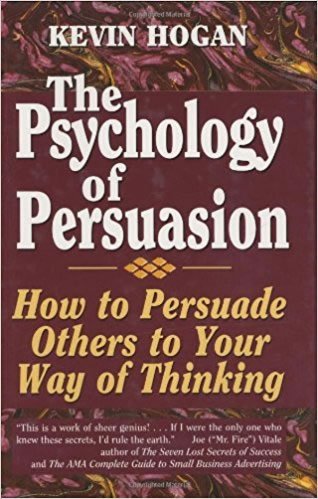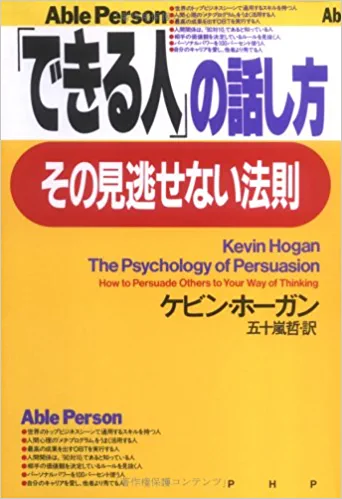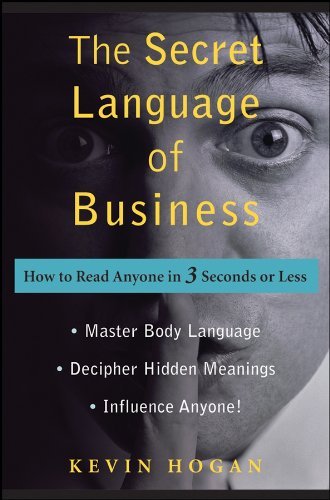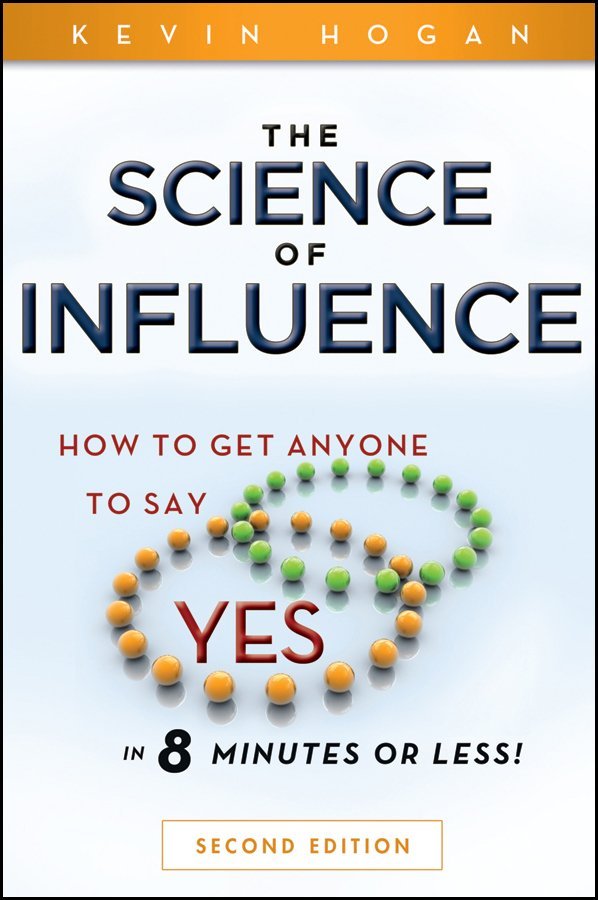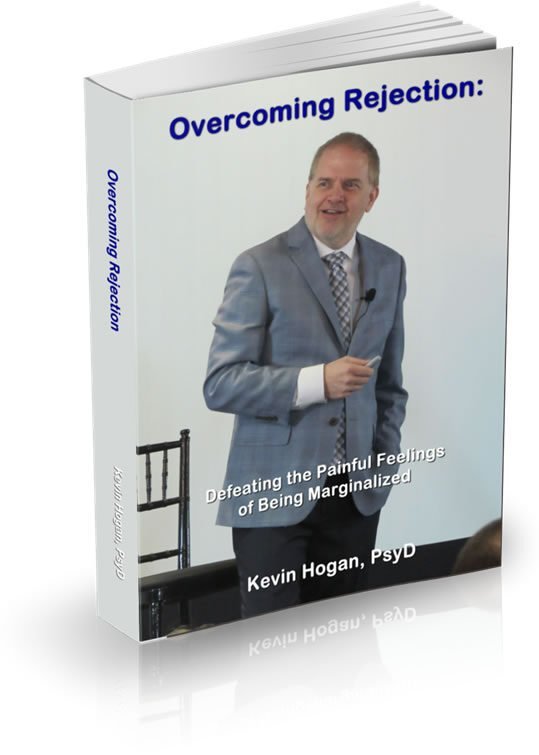
Framing how and what you say is one of the critical pillars of influence and persuasion. I took this photo and used it once before in Coffee with Kevin Hogan. Turn around and you are looking at the Italian Alps. Stunning. Look this way and you see this stairway with shops lined along both sides.
Both would be true and accurate representations of Italy. Both taken from the exact same spot. You just turn around and snap. I chose this frame, this photo instead of the other for you because it’s pretty unusual to see stores with outdoor entrances on an escalating stairway. You’ve seen beautiful lakes before.
Framing is also perhaps the most misunderstood aspect of persuasive communication.
How?
People with a introductory knowledge of framing think that framing is a straight line communication. They think, hey I’m going to be positive about this message so people feel good.
And they believe that will help their message be met with an action on the other person’s part.
And of course most of the time, that doesn’t happen.
And that is not how framing works.
Let me explain…
“New Home Sales Explode Back to Pre-Pandemic Levels” is a U.S. headline on one website I follow. In fact new home sales in June were as high as they’ve been since 2007….and it’s true that they had reached a point we haven’t seen in over a decade.
Makes you feel pretty good inside and there are times you want your communication with an audience to start off on a positive note….or far better END it on a positive note.

Meanwhile the Case Shiller Index (index of existing home prices based on a comparison of house X selling today vs. what it sold for the last time it was up for sale. If I were to frame a headline it would be “price of existing home sales hits another all time high.” And it’s true. The index is up about 10% over what it was right before the crash of 2007 – 2010.
Those are both pieces of good news that are used to frame an attitude or a bigger idea. For example, maybe you want to show that the economy is good, or that it’s a good time to buy / sell houses. Or perhaps you want people simply to feel better.
But of course frames are just frames, they are one picture of reality.
In the U.S. real estate market the number of existing houses being sold is far more important to consumers, and even though June sales were 20% higher than May, we’re still seeing lower sales volume than any time since 2013. Two extremes of data that allow you to frame your message however you want to frame it.
Framing your messages is critical to how your audience will perceive your communication.
You should also know that in the U.S. housing prices are in a massive bubble that will burst (against inflation, whatever that will be) soon. BUT this is a very good time to buy a house in general if you can secure financing which costs 3.2%. We’ll save that discussion for an article on wealth building.
How you frame your message will also determine the TYPE of message you must have. The frame is the starting point but that’s ALL it is. Your Message Strategy BEGINS with your frame.

If you were a manufacturer of masks, you would use a message like “coronovirus reaches highest levels yet in Florida as people drop their masks.”
If you were trying to encourage people to go back to school or work you’d say, “Worldwide coronavirus deaths continue to grow in July while only rarely impacting children whether they are symptomatic or not.”
In your continuing study of what determines why people buy and why they decide to do the things they do, you easily figured out that all is not logical and rational in the real world. This article will give you 7 brand new key insights and frames in which to paint your selling pictures.
1. The Best of Times…The Worst of Times:
Tonight…after whatever happens next with the shocked woman, will she a respond to a message that to do something you propose will be an adventure, capture and hold her attention?

Are you Selling Security or Adventure? It only makes all the difference in the world…and what REALLY matters more than that is what is the STATE of MIND of the woman and how that fits into the greater context of what’s going to be happening in her life.
When times are relatively good, on average, we are biologically programmed to venture out and increase risk and adventure in our lives. When times are bad, on average, we are likely to be much more conservative and seek out security.
When participating in the sales process it is very useful to know whether your client (life on the planet and in your community…and the economy in general) is going through good times or bad. If she is going through good times you can appeal to her desire to experiment, her need to expand her horizons and explore. If she is going through bad times, you need show how your products will allow her to meet her security generating and conservative needs.
The emotional appeal of your product is very important in determining whether you will make the sale or not. People will justify their purchase logically, but first need to fit the product into their emotional filters.
People wonder, “Gee I gave her such a great price how could she have said no? She slammed the door on me? She just hung up?” What my first mental reaction is, “something in her life is sucking.”
Legend Point: Appeal to your customer’s need to take risks and participate in adventure in good times. When experiencing bad times, appeal to your clients needs of security and safety. It’s up to you to find out from your customer!
2. Your Appeal Should be to the Many, not Just the One

Our genes do not simply generate the tendency for us to survive and care for the self, but they virtually command and carry out a powerful compulsion to care for our children and the larger groups that we are part of. In fact, almost all of our genetic make-ups are so designed that we will help the larger groups we are part of survive before they will save themselves. (You have witnessed this in CV19.)
Not only is that an altruistic act, it is part of most people’s genetic programming. The compulsion to care for others in our group is very powerful. Almost all people are pre-programmed to act in the best interests of the following:
- Themselves
- The Family
- Their Group
- Their Culture
- God
Your appeal should be to the many, not just the one.
The big mistake that salespeople make is that they only appeal to the customer’s best interest when they should be appealing to the customer’s interest in how your product will help his family, his employees, his civic groups and church organization, society as a whole and even God. There is an old Mc Donald’s commercial that illustrates how to appeal to the greater genetic needs. The theme song, “You deserve a break today, so get up and get away, to Mc Donalds…” plays in the background. The image is that of a man who has had a long day at work and the theme initially plays to his deserving a break. The genetic motivator however is not self-satisfaction. The motivator is when you see Dad and Mom and the kids all driving off to Mc Donald’s together.
Legend Point: What a person may not be able to justify for himself can often be justified if it becomes obvious that it benefits our family, or society, or the group with which we belong.
3. Who Your Customer Wants to Be Like
Simple basic logic.
In all species, including humankind, the masses are compelled to be like the leader of the group(s). Your appeal to your customer therefore, should in part be one of installing the desire to be like the leaders in his or her field. This could mean being a better parent, a better employee, a better supervisor. Your job is to show how your products and services help your customer be more like the leader(s) of the group(s) he is most intimately linked to. In general, we imitate our leader’s behavior. As a sales person, we therefore want to show how using our products will make the customer more like the leaders.
4. Positive Attitude? Here’s the Truth for Salespeople

Research completed last year reveals that projecting a positive attitude is not nearly as helpful to the self when contrasted with the impact that it has on others. When your customer sees your positive attitude it gives them optimism and encouragement that you are a good person to be with and buy from. “Generating” a “positive attitude” is very important to sales success, because it improves the relationship you have with others. Not feeling positive? Be the actor playing the role. Stay focused, eyes on the target and reap the rewards!
Let’s be honest though: Generating a positive attitude for one day because you are down and out due to the taxman, a fight with the kids or a spat with the in laws is one thing. Generating a positive attitude because you are not able to truly be happy with what your life work is, is quite another.
You can only work off your reserves for so long before you need to do what is right for YOU and YOUR LIFE. Don’t sell something or be involved in a company that doesn’t get your juices flowing for any longer than is absolutely necessary. Find work that you would do for free! That’s usually the work you ultimately get paid the most for.
5. How the Enemy Makes A Sale for You

When I think about “the enemy,” I usually think of idiots. People who try to get other people to do stupid things that put them at risk for no real reason.
When it seems that there is no competitive edge to your product or service, you can utilize a genetic predisposition that was alluded to in the topic above. You can assist in creating an enemy to bind people together. The Internal Revenue Service is an enemy that has been able to bind the thoughts of the public together. This has been done by our elected officials so we will vote for them. The enemy can be “good” or “evil.” Appearances of good and evil are in the eyes of the beholder, of course. Mc Donald’s doesn’t like Burger King. Microsoft doesn’t like Netscape.
Legend Point: Create or identify an enemy that needs to be fought and then define how you, or, your product or service will help in the fight against the common enemy. An enemy can be a person, a group, a nation, or a non-living thing, like drugs, cigarettes, associations, churches, newspapers, etc.

The concept of using anger, disgust, fear, hatred and negative emotions in effective selling and marketing is as old as monetary exchange. For years we have seen commercials about how disgusting roaches are to have in the house. We spend billions on security systems every year in America, but only once the customer has experienced through future pacing or in actual case history of his security being violated. People will purchase products to relieve pain, reduce anxiety, be less depressed…and these products go far beyond medications! Some people buy magazines, books, CD’s, computer games, internet services, cars, houses, groceries, all to reduce negative emotions.
6. The Have’s and The Have Not’s…Have or have not got Control

“Money doesn’t bring you happiness.”
“People care too much about money.”
“Money isn’t important.”
“I don’t need things.”
“I don’t like being around all those control freaks.”
“All I need to be happy is…”
When you are selling, you pace the client’s actions and beliefs, but, also realize that he is only human and therefore programmed like most other humans. Your customer will often state something that he really doesn’t believe, because, he wishes that what he was saying was true.
What are the facts about control, having, and happiness? How do these biological truths relate to your selling your products and services?

Legend Point: Control: The more you have, the healthier you are. Control is what keeps you focused and aware. People who experience a great deal of control in their lives tend to be healthier. When people feel in control or they feel your product or service will put them in control they are likely to buy from you now.
If your customer is to succeed in life and move up the ladder of success and survival, he needs problems, the ability to solve them and the victories that come from defeating his problems. Control is analogous to personal power. Personal power is the ability to take action and achieve. The ability to meet life’s challenges head on and win is not only useful in raising self esteem and self efficacy but also the general health of your client!
If your product or service will give your customer more control in his life and she realizes it, then she will buy your product. PERIOD. Without control people become hopeless. When people become hopeless you are once again able to help your customer. If your product or service can generate hope, you give new life to your customer…literally. If your customer sincerely believes that your product or service can help him, then you can literally help him change his life.
Legend Point: We need a significant amount of control for happiness. If you can paint a clear picture of how you can help the other person regain control in some area of his life or business, he will buy anything from you.
7. Selling Testosterone

Testosterone is a hormone that isn’t just the driver of the human race it because of desire but is literally largely responsible for sperm production. If this photo appeals to you, that’s almost certainly your testosterone talking. If it doesn’t then it probably means that your sex drive (assuming you are male in this case) is modest or low. Nothing wrong with that, BUT: Men who are rich in testosterone often find themselves in great trouble or achieving great success. Testosterone inspires confidence and aggression. Most entrepreneurial types tend to be high in testosterone and tend to be confident of their ability to achieve in business and life. Knowing this allows you to pull a useful mind string. Appealing to the core urges of a man in some manner is useful in awakening his confidence and “go for it” attitudes.
Legend Point: Help your client re-experience past victories in any aspect of life and you will probably succeed in creating a “testosterone rush.” Linking your product to this rush, will enhance the probability of compliance.
Testosterone is tied to “winning” in men. An excellent manner of instilling a testosterone rush into men is to have them recount a story of a time when they overcame the odds and “won.” This normally creates a testosterone surge in men and builds confidence. By successfully linking this internal state to your product or service you almost assure yourself of making a sale.
8. Success
The higher up the ladder a person climbs, the more “friends” a person has. When Paul and Ringo sang, “I get high with a little help from my friends, it was more than an allusion to smoking a joint. The much bigger point is that success comes from helping people get another step up.
Now, it should be noted that these friends may be “fair weather friends,” but clearly those who wish to consider themselves friends of the leaders in groups are far greater than those who dwell near the bottom of the societal ladders. Therefore you have an opportunity to appeal to an individual’s pre-programmed desire to first be at the top of the ladder and second, to be friends of the person at the top of the (or “a”) ladder.
You may have the opportunity to share with your customer that if he moves up the ladder in his group that his health will improve. Recent research shows that those who are higher up the “ladder” have less hypertension. Health benefits are going to be a good justification for any action in the 21st century and this is one that is truly worth noting when it ties in with your products and services.
Legend Point: People want to either be at the top, be seen with the people on top or be given hope that they may be able to make it to the top. Your product or service should somehow be able to help your client up the ladder.
“Wow! The Science of Influence is the best information I have ever come across. I went to church with my mother this morning and instead of focusing on the sermon, I was thinking of ways the minister could be more effective in his PRESENTATION. By just taking the flock into the future, and appealing to the group mentality he might have gotten one yes, he did not get any. The fear of not being in the flock for eternity may have swayed a few heads, as well. The applications are endless. Lookout, because once I have absorbed this information thoroughly, there are no limits on my ability to influence. This information is so powerful, a license should be required to use it. Amazing. Thanks.” Steve Hutcherson, St. Charles, MO
- Universal Principles of Influence in Business and Relationships
- The Omega Strategy
- Mastering Omega Strategies
- Framing Techniques and Strategies
- The Keys That Unlock the Doors to Their Mind
- The Laws of Influence: Applications
- Mastering the Laws of Influence
- The Guarded Secrets- Confusion, Amendment, The Dominant Value and Strategic Framing
- Mastering the First 30 Seconds / Making Incredible First Impressions
- Proven Strategies and Techniques that Get to Yes!
- Metaphors and Emotions that Successfully Change Behavior
- Utilizing the Brain’s Perception and Projection to Change People
The Science of Influence is the place to begin. What makes the Science of Influence different from every other program about persuasion? This material is fresh, potent, tested, and has nearly all of what you will discover is new! There is no rehash of past salespeople or scholars.
Science of Influence Master’s Home Study Course (12 CDs)
with Kevin Hogan, Psy.D.
This program is the culmination of years of selling synthesized with the last five years of academic research into compliance gaining, persuasion and influence. You won’t find a program like this, designed for you, anywhere else.


